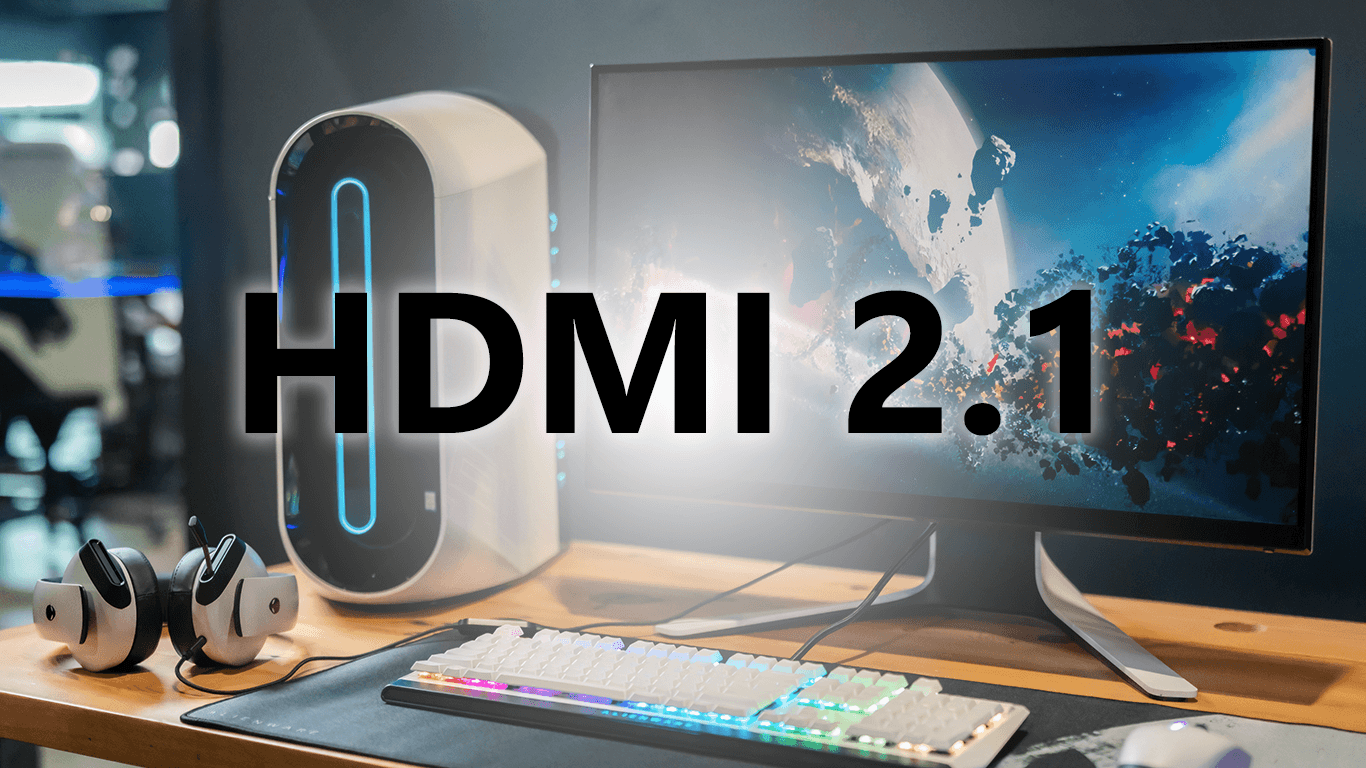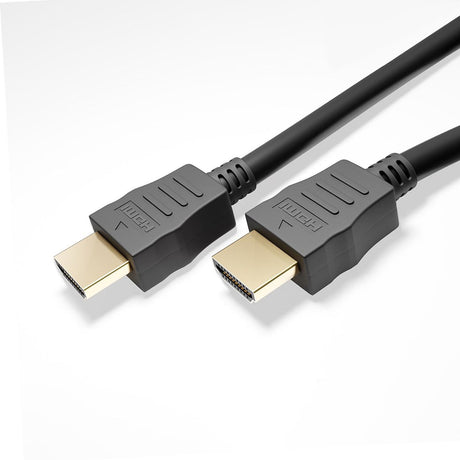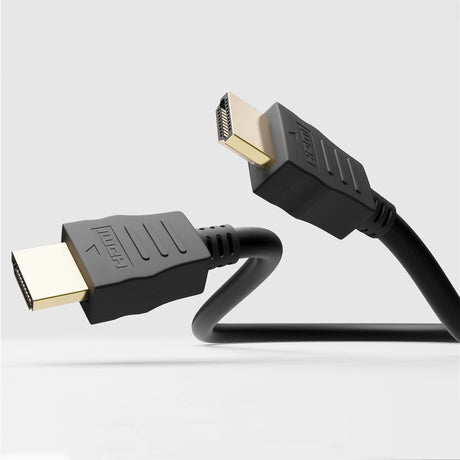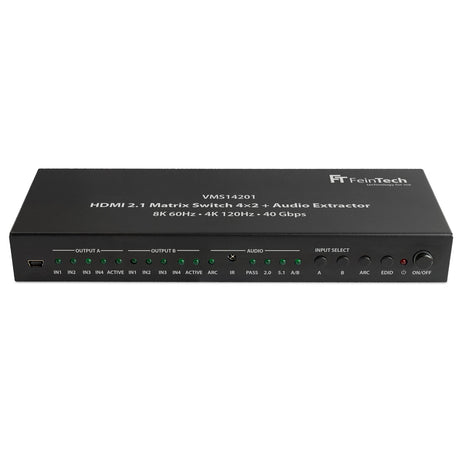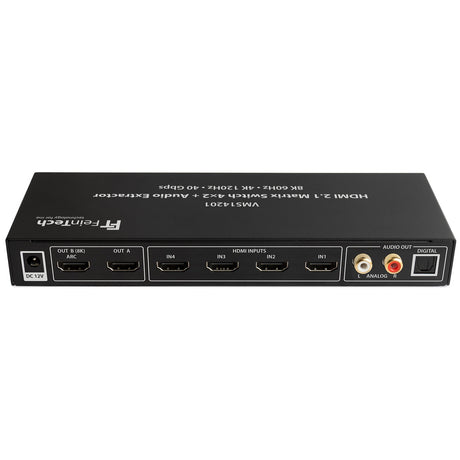What's new in HDMI 2.1?
With the Playstation PS5 and Microsoft Xbox Series-X, the first HDMI 2.1 sources from consumer electronics were released in 2020. PC graphics cards can also generate HDMI 2.1. Since then there have also been televisions and AV receivers for the new standard. But what are the advantages and what is new?
Higher video resolution up to 10k
The HDMI specification 2.1 supports resolutions up to 10k (10240 x 4320) and higher refresh rates. The most common are still 4K and the new 8K. At 4K (3840 x 2160), the maximum frame rate increases to 120Hz. And thus enables razor-sharp UHD images even with very fast movements. Sports broadcasts and computer games benefit the most from this – assuming they were produced that way. 8K (7680 x 4320 pixels) delivers twice the horizontal and vertical resolution of 4K. Quadruple the number of pixels combined with a refresh rate of 60 Hz enables content to be displayed smoothly and sharply on large screens. In addition to 4K and 8K, a range of other resolutions are supported including 5K and 10K for commercial AV, industrial and specialty applications. It will be many years before media such as films and series are produced in 8K. Because cameras, the entire post-production and transmission paths have to be converted.
HDR formats
The HDMI 2.1 specification supports "multiple static and dynamic HDR solutions" - like HDMI 2.0b did. Not much changes here. HDR enhances video images with an expanded dark to light contrast range for deeper blacks and brighter whites. This allows more detail to be seen in both the dark and light parts of the same image. The color space is also expanded. With Statistical HDR (eg HDR10) the values for depth, detail, brightness, contrast and color space are fixed for the entire film. With dynamic HDR (e.g. Dolby Vision), picture by picture is displayed with the ideal values. HDR-enabled content is available for movies, videos, TV shows, console and PC games, and VR.
VRR - Variable refresh rate for gaming
One of the highlights of the HDMI 2.1 specification is the variable refresh rate VRR (Variable Refresh Rate). PC gamers have long known this feature under the names FreeSync and G-Sync. VRR reduces or eliminates lag, stuttering and image tearing for smoother gameplay. The VRR allows a game source (console or computer) to deliver video frames as fast as possible, which in many cases is slower than the normal static refresh rate.
This is because graphics processors require different amounts of time to render an image. This time depends on the complexity of the scene, the performance of the GPU, the resolution chosen and the frame rate. A graphics processor that is too heavily loaded will not be able to render the next frame in time. Therefore, the display must either repeat the current frame or show the next frame, which is only partially rendered. This causes stuttering or cracked graphics. VRR waits until the next image is ready to be transported. The frame rate is therefore not constant, but variable, depending on the graphics performance. When the graphics card is heavily loaded, the frame rate drops slightly to ensure that full frames are displayed smoothly.
ALLM - Automatic low latency mode
Many TVs already offer a low-latency gaming mode. If activated, the TV turns off image enhancers and the like in order to display the video signal as quickly as possible. Action games and time-critical applications such as video telephony benefit from this. The Auto Low Latency Mode (ALLM) of HDMI 2.1 enables this mode to be switched on automatically. The user no longer has to activate the game mode manually and saves the settings in the TV menu.
When switching to a movie stream, the source disables the ALLM signal. The screen returns to the previous mode for optimal display.
QFT - Fast Frame Transport
The Quick Frame Transport (QFT) reduces latency for games and real-time applications. This means that frames are transported at a higher rate. This speeds up game responsiveness, such as the time between pressing a key and the resulting on-screen action. QFT only refers to signal transport. The bottleneck in practice is still the performance of the graphics unit GPU.
QMS - Fast media change
HDMI 2.1 offers Quick Media Switching (QMS) for movies and videos. This eliminates the lag or brief black screen that occurs when the frame rate changes (as long as the resolution remains the same).
For example, if you're watching trailers from a streaming service, they might be in 24Hz, 50Hz, or 60Hz. Every time a trailer with a different frame rate is selected, the entire system has to change clocks and re-synchronize, resulting in a momentary black screen. Streaming services can now compensate for this and add a built-in delay so users don't miss the first part of the trailer. So when the service and devices support QMS, the viewer never sees a blank screen.
eARC - the extended audio return channel
HDMI 2.1 features the Enhanced Audio Return Channel (eARC) , the successor to the former Audio Return Channel (ARC) represents. The TV sends the sound to the output of the sound system via the audio return channel via an HDMI input – basically backwards. This means that no additional cable is required for audio playback. The sound from smart TV apps, from the internal tuner or connected devices is transmitted via eARC/ARC via HDMI.
With eARC, this audio connection should become more reliable and support other formats. eARC is fully backward compatible with ARC. So you can also operate an ARC sound system on a new television with eARC. But then only with the maximum audio formats from ARC, i.e. Dolby Digital Plus (incl. Dolby Atmos). eARC, on the other hand, supports the latest high bitrate audio formats up to 192kHz, 24-bit and uncompressed 5.1 and 7.1, as well as uncompressed 32-channel audio. It also supports DTS-HD Master Audio, DTS:X, Dolby TrueHD, Dolby MAT / Atmos.
Cable for HDMI 2.1
In principle, any previous HDMI cable can also be used for HDMI 2.1. Because the plug and cable assignments are identical. As long as no higher data rates than 4K Ultra-HD are used, no problems are to be expected. With resolutions of 4K 120Hz, previous cables are reaching their physical limits. Then specially tested cables should be used. For the 48 Gbps data rate at full resolution, however, an HDMI cable with copper conductors can only be 3 m long. Given the large screens for 8K, that's very close. Greater lengths require cables with optical data transmission.
Other novelties
A new transmission method is used with HDMI 2.1. Instead of TMDS (Transition-Minimized Differential Signaling) with 3 data channels plus clock signal FRL (Fixed Rate Link) used with 4 data channels. Advantage: Simply by eliminating the clock signal, the possible data rate increases by 33%. In order to achieve the highest resolutions and color depths, signal compression was also agreed.
The following resolutions were introduced with HDMI 2.1:
- 4K 50/60Hz (including 4K RGB 12-bit / 24Gbps)
- 4K 100/120Hz
- 5K 50/60Hz
- 8K 50/60Hz
- 10K 50/60Hz
- 10K 100/120Hz
All resolutions are governed by 4:2:0 color sampling for movies and 4:4:4/RGB for PC applications. The color depth can be 8 bit, 10 bit, 12 bit or 16 bit. HDMI 2.1 supports various static and dynamic HDR solutions.
So the FRL method of HDMI 2.1 is completely different from TMDS. Therefore, it seems unlikely that simultaneous mixed operation will be possible. If, for example, the source and sink are transmitted via HDMI 2.1 or in the FRL process, an AV receiver connected in between must also do so. Then you have to buy a new one just to be able to pass the signal through. Alternatively, the sound can be output via HDMI-ARC via the return channel of the television. The eARC Extractor is suitable for this VAX01202.
So upcoming HDMI 2.1 devices like splitters and matrix switches will only enable the new features and data rates if all connected devices support HDMI 2.1.
Our conclusion:
HDMI 2.1 is of particular interest for computer games with consoles on the television. For PC gamers, dedicated monitors and the DisplayPort connection offer more advantages than HDMI 2.1. For home theater, the expanded audio return channel enables better sound formats and more stable operation. A higher image quality is not on the agenda for the time being, because Ultra-HD 4K has not yet been exhausted. In the foreseeable future, 8K transmissions will only be available for special live events such as the Olympic Games or concerts.

